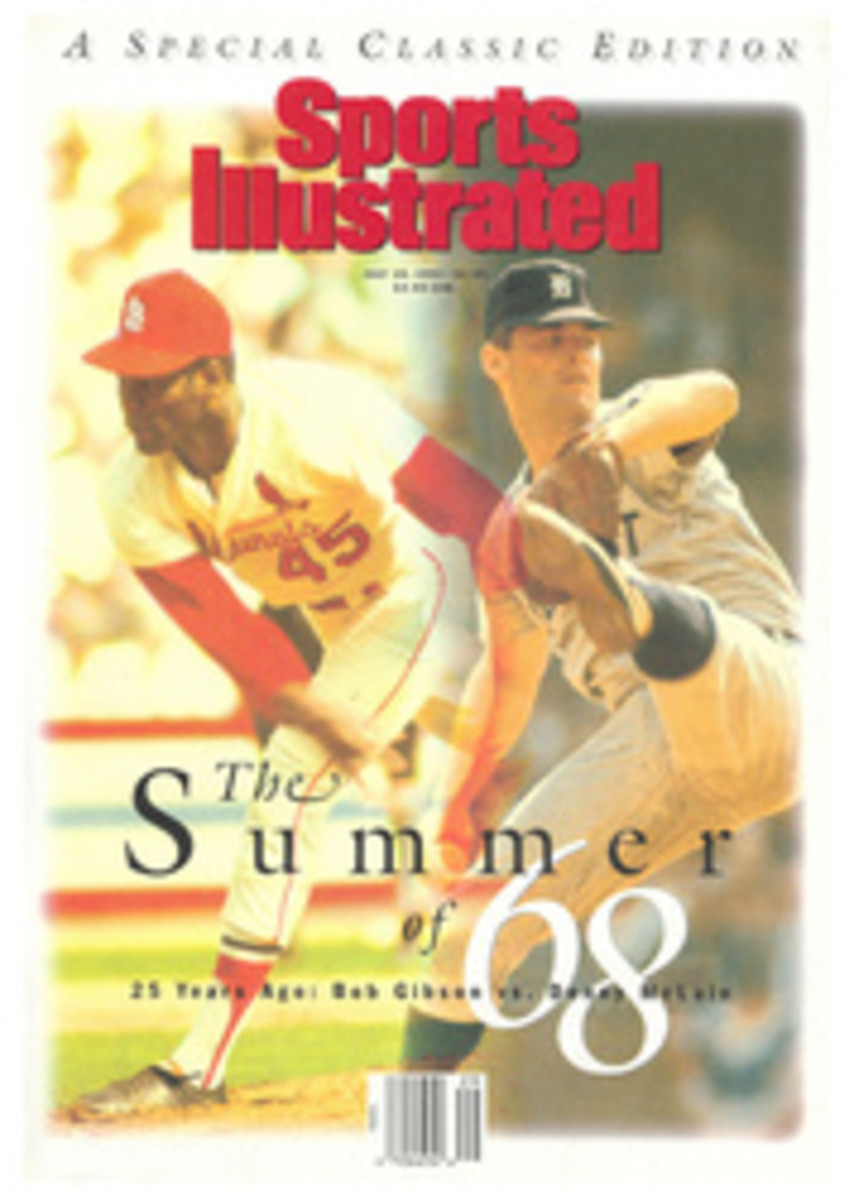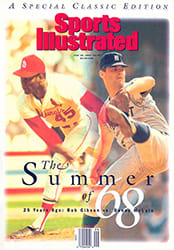
The Time of a Lifetime
Fifty-two years ago this month, the happiest man in the world got on a Chicago-bound train at Penn Station in Newark. That man was me. It was 1941, and I was a 22-year-old outfielder for the Newark Eagles; I had been picked for the first time to play in the East-West Game, the Negro leagues' annual all-star classic.
Until Jackie Robinson signed with the Dodgers in 1945, the East-West Game was the biggest thing a black baseball player could aspire to. I played in it five times, and those occasions still rank among the greatest moments of my career. Segregation was cruel. This was sweet.
I was awed to share the ride with a legend. Buck Leonard, the superb first baseman for the Washington Homestead Grays. Roy Campanella, a young catcher for the Baltimore Elite Giants, felt the same way. Campy and I spent most of our time in the club car, playing cards and talking about the upcoming game. We didn't care how long the trip took, just as long as we got to our destination.
Count Basic had written a song called Gain' to Chicago Blues, and a singer named Jimmy Rushing had made it into a very popular record that year. They were playing it on the radio during our train ride, and everybody in our car was singing, Goin' to Chicago, sorry that I can't take you. Goin' to Chicago. I couldn't wait.
We finally pulled in late Friday night and checked into the Grand Hotel. The whole scene was festive and fun. People like Basie, Ella Fitzgerald and Billie Holiday would always make it their business to be in town for the East-West Game, and we'd be sure to check them out at the jazz clubs. You didn't go to Chicago to sleep. By comparison, I found out later, the big league All-Star Game wasn't nearly as much fun.
We had plenty of good times, but the goal was to win the game. Other than pride and bragging rights, though, there was not much incentive. Win or lose, you only got $50 for expenses, and that usually lasted one night. When you got home, you might be broke, but you had enough memories to last a lifetime.
The 1941 game was played on a scorching Sunday afternoon. Still, there must have been 52,000 people there, because it was advertised that Satchel Paige, who was with the Kansas City Monarchs then, was going to be one of the main pitchers. At that time, Comiskey Park held only 50,000 people, but you could always do business with the fire department, so they'd let people sit in the aisles. Anyhow, the place was packed.
There were a few whites scattered throughout the stadium, but mostly it was blacks of all backgrounds, all shapes and sizes, men and women and children. Black people used to love baseball. I wish I knew what happened to that love for the game. Maybe it's become an economic thing—but people had to scrape to get by in the old days, too.
The East-West Games were a joyful experience. They put red, white and blue banners up all over the park, and a jazz band would play between innings. People would come from all over the country to be part of this spectacle. The games were good. The players were great. If you could have picked one all-star team from the two squads, it surely could have rivaled any white major league all-star team of the time. That team would have been as good as any all-star team that's ever played.
I'm still angry about my first at bat that afternoon. Hilton Smith, a fine pitcher for the Monarchs, got me with a 3-and-2 curveball that broke right in the heart of the plate. My next time up he threw me the same pitch, and I doubled down the leftfield line.
Satch was the center of attention, and he knew it. As we stood around the batting cage, he'd say, "Fellas, the East-West Game belongs to me. I don't have to pitch but two or three innings, so I'm gonna be very stingy today. In fact, I'm givin' up nothin'! When I get around to the Grand Hotel tonight, I'll buy you a beer. But today, nothin'! Zero!" He was right.
The West used to save Satchel to finish things up. In 1941 he came in to pitch the top of the eighth. It must have been about a hundred and five degrees. You could see little heat waves emanating from home plate. So our first baseman Lennie Pearson goes up and takes his three strikes, and comes back to the dugout, sweat streaming down his face. He sits down next to me, doesn't say a word. I say, "Len, what kind of stuff does he have?" He says, half whining, "I don't know. I didn't see it." He was telling the truth. Satch was throwing so hard you could hardly see the ball. He pitched two innings, and the only hit was a swinging bunt by Campy down the third base line. Fortunately, I didn't have to face him that day.
We didn't play in major league parks very often, so when we did, we'd shine our shoes a little better, make sure our uniforms were a little cleaner, make sure our caps were on a little straighter, try to look a little sharper, just to prove to the people in the stands, and especially to the major league scouts, that the big leagues were missing the boat by not signing us. And there were always plenty of scouts there. They knew. We'd say to them, "When are you guys going to wise up and sign some of this good talent?" And they'd say, "Just keep hustling. One of these days it'll happen."
Well, it took too damn long.
After 10 seasons in the Negro leagues, Monte Irvin, now 74, spent seven years in the majors, mostly with the New York Giants. He was elected to the Hall of Fame in 1973.
PHOTO
BEN VAN HOOK

